The 3.2 update on the Eee Pad brings about a new splashscreen as well as a TegraZone app. TegraZone is NVIDIA's custom marketplace that leverages the Android Market. TegraZone is used exclusively for games that are optimized for NVIDIA's Tegra 2 SoC.
The update itself is relatively minor from a feature standpoint. The version notes help explain the changes:
- Optimizations for a wider range of tablets Android 3.2 includes a variety of optimizations across the system to ensure a great user experience on a wider range of tablet devices.
- Compatibility zoom for fixed-sized apps Android 3.2 introduces a new compatibility zoom mode that gives users a new way to view fixed-sized apps on larger devices. The new mode provides a pixel-scaled alternative to the standard UI stretching for apps that are not designed to run on larger screen sizes, such as on tablets. The new mode is accessible to users from a menu icon in the system bar, for apps that need compatibility support.
- Media sync from SD card On devices that support an SD card, users can now load media files directly from the SD card to apps that use them. A system facility makes the files accessible to apps from the system media store.
To the left we have SystemPanel running at 800 x 480 on an Android smartphone, and to the right we have it running at 1280 x 800 on the Eee Pad Transformer. The UI just scales up. Now take a look at the Speedtest app:
It doesn't scale up, it's hard coded to an 800 x 480 resolution and appears as such in the center of our Eee Pad. Android 3.2 addresses this very problem with its compatibility zoom feature:
Here's the same Speedtest app but with the zoom control set to...zoom:
If you click to enlarge the image above you'll see it's not particularly pretty (interpolated scaling rarely is) but it does completely fill the screen. (source www.anandtech.com)
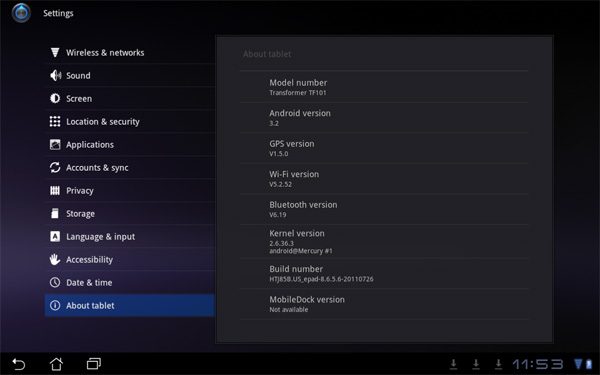
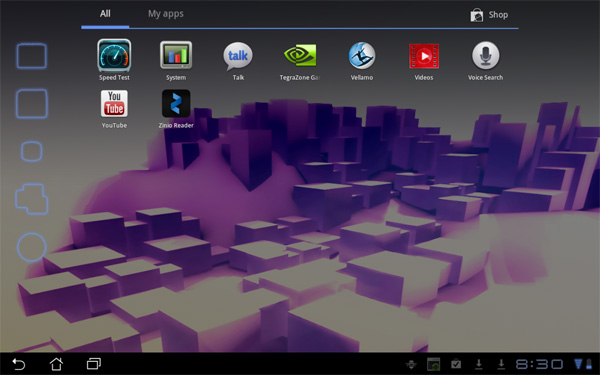
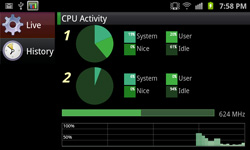
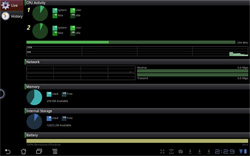

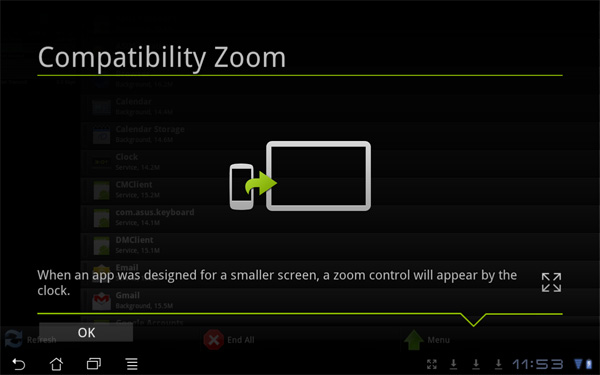
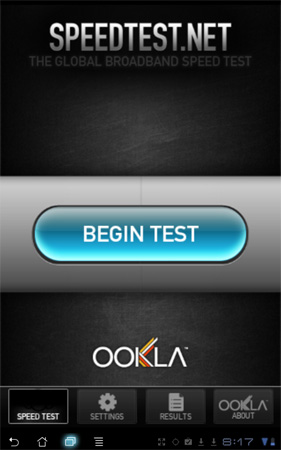
0 comments:
Post a Comment